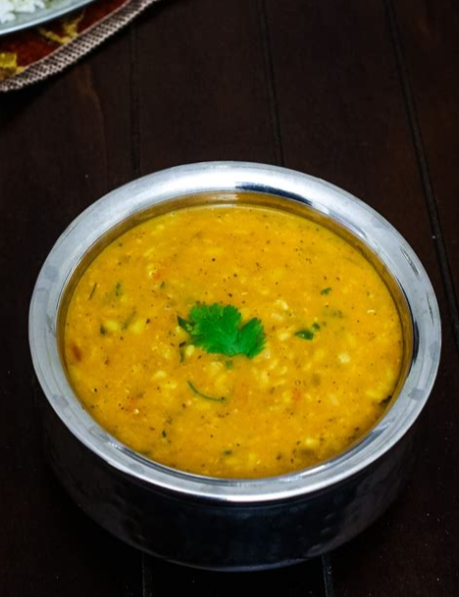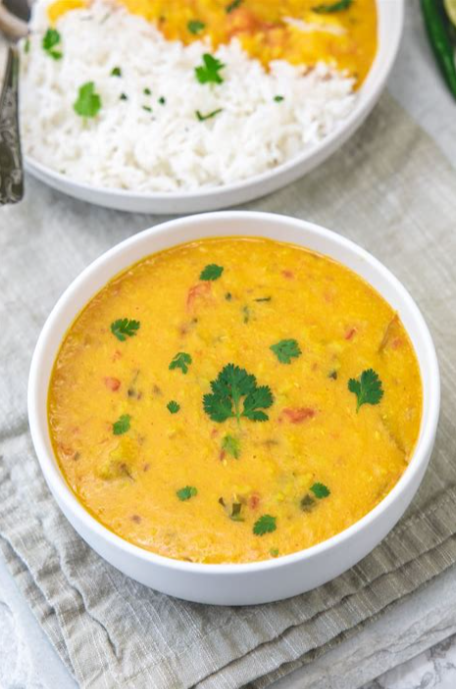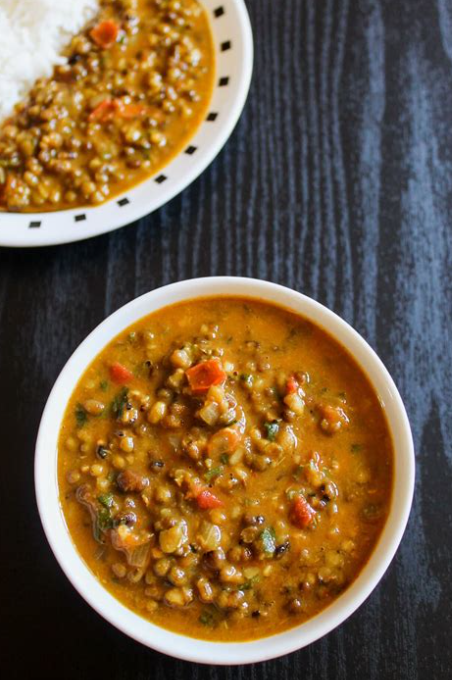Pulses Nutrition
Urad Dal
urad dal, also known as black gram or vigna mungo. Urad dal is a versatile lentil used in various delicacies. Not only is it nutritious, but it also offers numerous health benefits for your overall well-being, skin, and hair:
Health Benefits of Urad Dal:
Balances Hormones: Urad dal helps balance hormones and strengthen reproductive organs.
Soothes Swollen Tissues: It has anti-inflammatory properties that soothe swollen tissues.
Joint Pain Relief: Urad dal can help relieve joint pains and inflammation.
Enhances Bone Health: Rich in minerals like potassium, magnesium, iron, and calcium, urad dal improves bone density and prevents bone-related diseases.
Cardiovascular Health: Urad dal’s folate content helps lower homocysteine levels, preventing blood clot formation and maintaining healthy cholesterol levels.
Boosts Energy Levels: High iron content aids in red blood cell production, keeping you active.
Blood Pressure Regulation: Potassium in urad dal prevents blood vessel constriction, helping lower high blood pressure.
Healthy Skin and Hair: Urad dal contributes to healthy skin and hair.
- Nutritional Composition (per 100g of Urad Dal):
- Calories: 356
- Protein: 49%
- Carbohydrates: 23%
- Dietary Fiber: 39%
- Calcium: 14%
- Iron: 95%
- Folate: 54%
- Niacin: 9%
- Vitamin B5 (Pantothenic Acid): 18%
- And more essential nutrients!
- Remember, incorporating urad dal into your diet not only adds flavor but also provides essential nutrients and health benefits!
Moong Dal
Moong dal, also known as mung dal or green gram, is a versatile lentil used in various delicacies. Not only is it nutritious, but it also offers numerous health benefits for your overall well-being, skin, and hair:
- Health Benefits of Moong Dal:
- Balances Hormones: Moong dal helps balance hormones and strengthen reproductive organs.
- Soothes Swollen Tissues: It has anti-inflammatory properties that soothe swollen tissues.
- Joint Pain Relief: Moong dal can help relieve joint pains and inflammation.
- Enhances Bone Health: Rich in minerals like potassium, magnesium, iron, and calcium, moong dal improves bone density and prevents bone-related diseases.
- Heart Health: Moong dal is low in cholesterol and saturated fat, making it heart-friendly. Its dietary fiber reduces LDL (bad) cholesterol levels.
- Boosts Energy Levels: High iron content aids in red blood cell production, keeping you active.
- Skin Health: Moong dal’s antioxidants and protein support skin regeneration and repair.
- Digestive Health: The dietary fiber in moong dal promotes regular bowel movements and gut health.
- Nutritional Composition (per 100g of Moong Dal):
- Calories: 339 kcal
- Protein: 24g
- Carbohydrates: 59g
- Dietary Fiber: 16g
- Calcium: 132mg
- Iron: 6.74mg
- Folate: 120μg
- Niacin: 1.447mg
- Remember, incorporating moong dal into your diet not only adds flavor but also provides essential nutrients and health benefits!
Chana Dal
Chana dal, also known as split Bengal gram, is a versatile and nutritious legume commonly used in Indian cooking. Let’s explore its nutritional value and other essential details:
- Nutritional Value (per 100 grams):
- Calories: 252 kcal
- Protein: 13 g
- Total Fat: 4.5 g
- Saturated Fat: 0.4 g
- Dietary Fiber: 11 g
- Sugars: 7.3 g
- Sodium: 387 mg
- Calcium: 78 mg
- Iron: 1.8 mg
Health Benefits:
Potassium: 198.8 mg
Energy Boost: Chana dal is rich in B-complex vitamins (B1, B2, B3, and B9) that play a crucial role in glucose metabolism and energy production.
Vegetarian Protein Source: One cup of cooked chana dal provides 33% of your daily protein needs.
Heart Health: Chana dal’s antioxidants reduce blood vessel damage, lower inflammation, and its magnesium content helps regulate heart function.
Diabetic-Friendly: Low glycemic index and high fiber content help manage blood sugar levels.
Insulin Response Improvement: Magnesium improves insulin sensitivity.
Blood Pressure Regulation: High potassium and low sodium content contribute to blood pressure control.
- Cooking and Usage:
- Chana dal is a key ingredient in dishes like dal, vada, and masalas.
- In South India, it’s used to make payasamand other sweet treats.
Remember, chana dal is not only delicious but also a powerhouse of nutrients. Incorporate it into your meals for a healthy boost.
Lentils
Lentils, those humble legumes, are a powerhouse of nutrition! Let’s dive into their details:
- Nutritional Value (per 1 cup, cooked and drained):
- Calories: 230
- Carbohydrates: 39.9 grams
- Protein: 17.9 grams
- Fat: 0.8 grams
- Fiber: 15.6 grams
- Thiamine (Vitamin B1): 28% of the Daily Value (DV)
- Niacin (Vitamin B3): 13% of the DV
- Vitamin B6: 21% of the DV
- Folate: 90% of the DV
- Iron: 37% of the DV
- Magnesium: 17% of the DV
- Phosphorus: 28% of the DV
- Potassium: 16% of the DV
- Zinc: 23% of the DV
- Copper: 55% of the DV
- Manganese: 43% of the DV
- Health Benefits:
- Heart Health: Lentils are rich in fiber, which supports regular bowel movements and gut health.
- Chronic Disease Protection: Phytochemicals in lentils protect against heart disease and type 2 diabetes.
- Iron Source: Excellent for vegetarians to meet iron needs.
- Protein Power: Over 25% protein content makes them a great meat alternative.
- Nutrient-Dense: Packed with B vitamins, magnesium, zinc, and potassium.
- Cooking and Types:
- Different types include brown, Puy, green, yellow, red, and beluga lentils.
- Use them in stews, soups, salads, and warm dishes.
Remember, lentils are not only nutritious but also versatile and budget-friendly. Enjoy their benefits in your meals.
Peas
Peas, those humble legumes, are a powerhouse of nutrition! Let’s delve into their details:
- Nutritional Value (per 1 cup, cooked and drained):
- Calories: 62
- Fat: 0.2g
- Sodium: 58mg
- Carbohydrates: 11g
- Fiber: 3.6g
- Sugars: 3.5g
- Protein: 4.1g
- Vitamin K: 19.2mcg
- Zinc: 0.5mg
- Health Benefits:
- Eye Health: Peas contain carotenoids lutein and zeaxanthin, which protect against cataracts and age-related macular degeneration.
- Heart Health: High-quality protein, low sodium levels, and vitamins in peas make them heart-healthy.
- Cancer Prevention: Plant-based eating, including peas, may reduce cancer risk.
- Gut Health: Pea proteins increase healthy gut bacteria.
- Versatility:
- Enjoy garden peas, snow peas, or snap peas in various dishes.
- Add them to salads, stir-fries, or soups.
Remember, peas are not only nutritious but also delicious! Incorporate them into your meals for a healthful boost.
Rajma
Rajma, also known as red kidney beans, is a versatile and nutritious legume commonly used in Indian cooking. Let’s explore its nutritional value and other essential details:
- Nutritional Value (per 100 grams, cooked and drained):
- Calories: 252
- Protein: 13 grams
- Total Fat: 4.5 grams
- Saturated Fat: 0.4 grams
- Dietary Fiber: 11 grams
- Sugars: 7.3 grams
- Sodium: 387 milligrams
- Calcium: 78 milligrams
- Iron: 1.8 milligrams
- Potassium: 198.8 milligrams
- Health Benefits:
- Energy Boost: Rajma is rich in B-complex vitamins, which play a crucial role in glucose metabolism and energy production.
- Vegetarian Protein Source: One cup of cooked rajma provides 33% of your daily protein needs.
- Heart Health: Antioxidants in rajma reduce blood vessel damage and lower inflammation.
- Diabetic-Friendly: Low glycemic index and high fiber content help manage blood sugar levels.
- Insulin Response Improvement: Magnesium improves insulin sensitivity.
- Blood Pressure Regulation: High potassium and low sodium content contribute to blood pressure control.
- Cooking and Usage:
- Rajma is a key ingredient in dishes like rajma chawal(rice with kidney bean curry) and rajma masala.
- Enjoy it with rice, roti, or bread.
Remember, rajma is not only delicious but also packed with nutrients. Incorporate it into your meals for a healthy boost!
Arhar dal
Arhar dal, also known as toor dal or pigeon pea, is a staple in Indian cuisine. Let’s delve into its nutritional value and other essential details:
- Nutritional Value (per 100 grams):
- Calories: 343 kcal
- Protein: 23 g
- Fat: 1.4 g
- Carbohydrates: 63 g
- Fiber: 17 g
- Sodium: 86 mg
- Sugar: 2.9 g
- Calcium: 57 mg
- Iron: 3 mg
- Health Benefits:
- Heart Health: Toor dal helps maintain a healthy heart and digestive system due to its nutrients like protein, iron, magnesium, zinc, folate, thiamine, and vitamin B6.
- Cholesterol Management: It lowers bad cholesterol (LDL) and increases good cholesterol (HDL).
- Cancer Prevention: Toor dal inhibits the growth of cancer cells.
- Immunity Boost: It contains antioxidants and increases white blood cells.
- Bone Health: A natural source of calcium and vitamin D.
- Cooking and Usage:
- Toor dal is commonly used in traditional Indian dishes.
- It can be found in whole, split, or ground forms.
- Popular recipes include Dal Makhani(North Indian) and Kadhai Pulao (Sindhi).
- Toor dal pairs well with rice or bread.
Masoor dal: (Red Lentil)
Masoor dal, also known as red lentil, is a versatile and nutritious legume commonly used in Indian cooking. Let’s explore its nutritional value and other essential details:
- Nutritional Value (per 100 grams):
- Calories: 343 kcal
- Carbohydrates: 59 g
- Protein: 25 g
- Dietary Fiber: 10 g
- Fats: 1 g
- Iron: 7.5 mg
- Selenium: 8.3 µg
- Folate: 479 µg
- Thiamin (Vitamin B1): 0.9 mg
- Riboflavin (Vitamin B2): 0.2 mg
- Health Benefits:
- Blood Sugar Stabilization: High fiber and carbohydrates help stabilize blood sugar levels.
- Heart Health: Rich in antioxidants, it supports heart health.
- Anticancer Properties: Contains bioactive compounds that may inhibit cancer growth.
- Hypolipidemic Effect: Helps reduce lipid concentration in the blood.
- Antidiabetic Activity: May assist in managing diabetes.
- Skin Benefits:
- When turned into a water paste, masoor dal can combat skin infections.
- Roasted and milled masoor dal may aid in treating burns.
- Superpowers Against Retroviral Infections:
- Lectins in masoor dal may help fight infections like HIV.
Remember, masoor dal is not only delicious but also a powerhouse of nutrients. Incorporate it into your meals for a healthy boost.
Chickpeas
Chickpeas, also known as garbanzo beans, are a versatile and nutritious legume commonly used in Mediterranean and Indian dishes. Let’s explore their nutritional value and other essential details:
- Nutritional Value (per 1 cup, cooked and drained):
- Calories: 210
- Fat: 3.8g
- Sodium: 322mg
- Carbohydrates: 35g
- Fiber: 9.6g
- Sugars: 6g
- Protein: 10.7g
- Vitamin B6: 0.18mg
- Folate: 62.3µg
- Calcium: 65.4mg
- Vitamin A: 33.4IU
- Health Benefits:
- Heart Health: Chickpeas are high in soluble fiber, which supports heart health.
- Cancer Prevention: Compounds like saponins and B vitamins may protect against certain cancers.
- Blood Sugar Regulation: Resistant starch in chickpeas slows down carbohydrate digestion.
- Weight Management: Protein and fiber promote fullness and reduce calorie intake.
- Versatility:
- Chickpeas can be used in salads, curries, hummus, and even roasted as a crunchy snack.
Remember, chickpeas are not only delicious but also packed with nutrients. Enjoy them in your favorite recipes.
Dry beans
Dry beans also known as legumes, are a powerhouse of nutrition! Let’s delve into their details:
- Nutritional Value (per 1 cup, cooked and drained):
- Calories: Approximately 230
- Protein: Around 17.9 grams
- Fat: Only 0.8 grams
- Dietary Fiber: A whopping 15.6 grams
- Iron: Provides 4.56 milligrams
- Folate: Essential for overall health and preventing neural tube defects during pregnancy (482 micrograms in shelled edamame beans)
- Antioxidants: Rich in polyphenols, which have health benefits
- Health Benefits:
- Protein Power: Dry beans are high in amino acids, making them an excellent protein source for vegetarians and vegans.
- Folate: Essential for red blood cell health and preventing birth defects.
- Antioxidants: Polyphenols in beans offer protection against oxidative stress.
- Complex Carbohydrates: Low glycemic index helps manage insulin resistance and diabetes.
- Heart Health: Beans’ soluble fiber helps reduce cholesterol levels.
- Gut Health: Fermentable fibers support a healthy gut
- Versatility:
- Enjoy various types of beans, such as black, pinto, kidney, navy, and more.
- Incorporate them into stews, salads, soups, and savory dishes.
Remember, dry beans are not only nutritious but also delicious! Include them in your meals for a healthful boost.
Kabuli Chana
Kabuli Chana also known as white chickpeas, is a nutritious legume commonly used in various dishes. Let’s explore its nutritional value and other essential details:
- Nutritional Value (per 100 grams, cooked and drained):
- Calories: 127
- Protein: 7 grams
- Fat: 2 grams
- Carbohydrates: 21 grams
- Fiber: 6 grams
- Sugar: 4 grams
- Calcium: 40 mg
- Iron: 2.2 mg
- Vitamin C: 1.2 mg
- Health Benefits:
- Blood Sugar Control: Kabuli chana has a low glycemic index, preventing spikes in blood sugar levels.
- High Fiber: The fiber content aids digestion and keeps you full.
- Protein-Rich: A good source of plant-based protein.
- Rich in Folate (Vitamin B9): Essential for cell production and maintenance.
- Magnesium and Potassium: Contribute to overall health.
- Usage:
- Kabuli chana is used in popular dishes like choleand hummus.
Remember, kabuli chana is not only nutritious but also delicious! Enjoy its benefits in your meals.
Vatana
Vatana, also known as safed vatana or raw dried white peas, is a nutritious legume with several health benefits. Let’s explore its details:
- Nutritional Value (per ¼ cup, cooked and drained):
- Calories: 158
- Protein: 9.9 g
- Carbohydrates: 28.2 g
- Fat: 0.5
- Fiber: 2.3 g
- Health Benefits:
- Rich in Fiber: Safed vatana provides about 10% of the recommended daily allowance (RDA) of fiber. Fiber supports gut health, controls blood sugar levels, and helps manage cholesterol.
- High-Quality Protein: It contributes 9.9 g of protein per ¼ cup and pairs well with grains to form complete protein.
- Iron Source: Fulfill about 7.5% of your daily iron requirement.
- B Vitamins: Contains vitamin B1 and B3, essential for energy metabolism.
- Phosphorus: Supports bone health and heart function.
- Usage:
- Safed vatana can be used in various dishes like usal, ragda, or any other subzi.
- Incorporate it into your meals for a nutritious boost!
Remember, safed vatana is not only healthy but also versatile. Enjoy its benefits in your favorite recipes.



